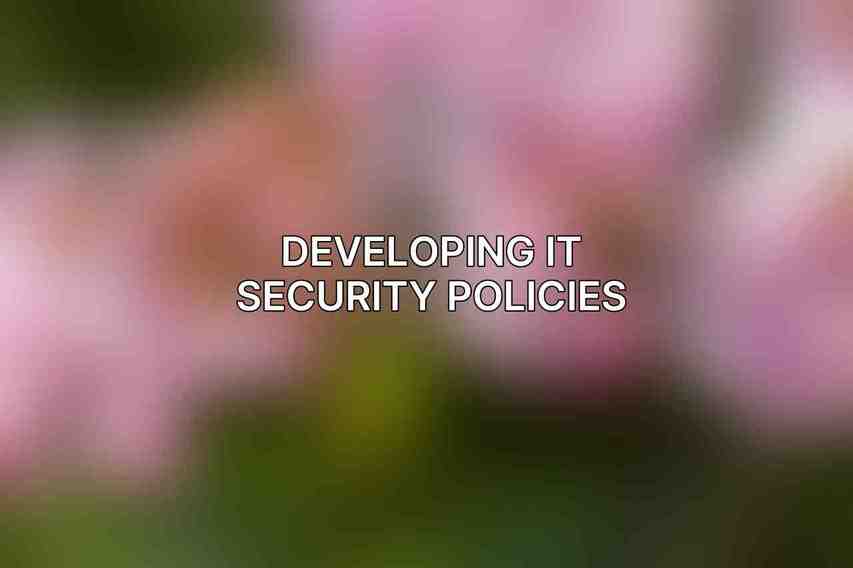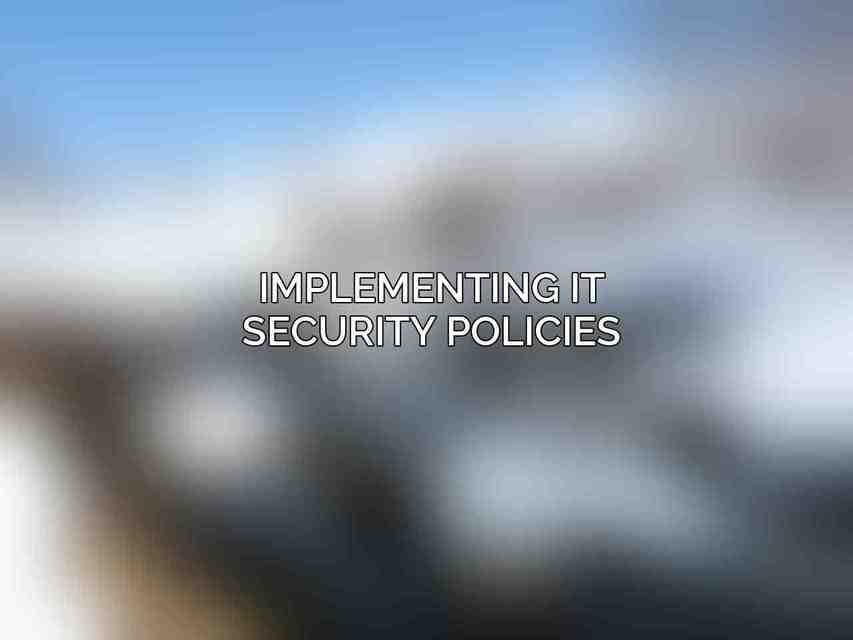The importance of robust it security policies cannot be overstated, especially for Small and Medium Enterprises (SMEs). These policies serve as the cornerstone of a company’s cybersecurity strategy, helping to safeguard sensitive data, mitigate risks, and ensure business continuity. However, crafting effective IT security policies tailored to the unique needs of SMEs can be a challenging endeavor. This starter guide delves into the essential aspects of developing, implementing, and maintaining IT security policies for SMEs. Find more on Strategies to Prevent Cyber Attacks on Small Businesses
Developing IT Security Policies

When it comes to developing IT security policies, a methodical approach is crucial to address the specific vulnerabilities and threats that SMEs face. The process involves several key steps:
- Identify assets and risks: Conduct a thorough assessment to identify the critical assets that need protection and assess potential risks and vulnerabilities.
- Establish security objectives: Define clear and measurable security objectives that align with the organization’s overall goals.
- Develop security controls: Implement appropriate security controls and measures to mitigate identified risks effectively.
- Document policies and procedures: Document the policies and procedures in a comprehensive manner to ensure clear understanding and adherence by all stakeholders.
Key components of IT security policies
The key components of IT security policies for SMEs encompass various crucial aspects that aim to fortify the cybersecurity posture of the organization. These components include: Read more about this on Comprehensive IT Security Guide for Small Businesses
- Access control: Regulate access to systems and data based on user roles and responsibilities to prevent unauthorized access.
- Data protection: Implement measures to safeguard sensitive data from breaches, including encryption, regular backups, and secure storage practices.
- Incident response: Define procedures for detecting, responding to, and recovering from security incidents to minimize the impact of breaches.
- Business continuity: Develop strategies to ensure the uninterrupted operation of critical business functions in the face of disruptions or disasters.
Implementing IT Security Policies

After the development phase, the successful implementation of IT security policies hinges on effective communication, technical enforcement, and continuous monitoring:
- Communication and training: Educate employees about the importance of IT security and provide training on policy compliance and best practices.
- Technical implementation: Deploy appropriate security technologies and solutions to enforce policy adherence and strengthen defenses.
- Monitoring and enforcement: Regularly monitor systems, conduct audits, and enforce policies to ensure ongoing compliance and effectiveness.
Types of IT Security Policies
IT security policies come in various forms, each serving a specific purpose in safeguarding the organization’s assets and data. Some common types of IT security policies include:
Acceptable Use Policy (AUP)
Setting clear guidelines to prevent security incidents stemming from misuse.
Example: Prohibits accessing inappropriate websites, downloading unauthorized software, and sharing sensitive data.
Data Protection Policy
A data protection policy focuses on safeguarding sensitive data against unauthorized access, modification, or disclosure through stringent controls and practices.
Example: Requires strong password protection, regular data backups, and encryption of sensitive data.
Incident Response Policy
Ensuring a swift and coordinated response to minimize damage.
Example: Defines roles and responsibilities, communication channels, and steps for mitigating and recovering from incidents.
Business Continuity Policy
Outlining strategies for resilience and recovery. Learn more about IT Security Training Programs for Small Business Employees
Example: Outlines plans for data recovery, alternative work arrangements, and communication with stakeholders.
Tools and Resources for SMEs
Several tools and resources are available to assist SMEs in bolstering their cybersecurity posture and implementing effective IT security policies:
- NIST Cybersecurity Framework: Offers guidelines for managing cybersecurity risks effectively.
- SANS Institute’s Critical Security Controls: Identifies essential security controls to mitigate common threats.
- Security Awareness Training Platforms: Platforms like KnowBe4, ProofPoint, and PhishMe offer training to enhance cybersecurity awareness among employees.
- Security Software Vendors: Companies like Symantec, McAfee, and Trend Micro provide security software solutions to fortify defenses against cyber threats.
the world of cybersecurity is continually evolving, necessitating SMEs to prioritize the development and implementation of robust IT security policies. Regular review and updating of policies, collaboration with IT security experts and leveraging available resources are pivotal in fortifying the organization’s defenses against cyber threats. It is imperative for SMEs to embrace a proactive approach towards IT security to safeguard their assets, data, and reputation in an increasingly digital world.
Frequently Asked Questions
What are IT security policies?
IT security policies are guidelines and rules put in place to protect an organization’s IT infrastructure, systems, and data from internal and external threats.
Why are IT security policies important for SMEs?
IT security policies are crucial for SMEs to prevent cyber attacks, protect sensitive data, ensure regulatory compliance, and maintain business continuity.
How can SMEs create effective IT security policies?
SMEs can create effective IT security policies by conducting a risk assessment, involving stakeholders in the policy development process, defining clear objectives and responsibilities, and regularly updating the policies.
What are some key components of IT security policies for SMEs?
Key components of IT security policies for SMEs include acceptable use policies, password policies, data protection policies, incident response plans, and employee training programs.
How can SMEs ensure compliance with IT security policies?
SMEs can ensure compliance with IT security policies by providing regular training to employees, monitoring policy adherence, conducting audits, and addressing any non-compliance issues promptly. You can find more information on Top Cybersecurity Tools for Small and Medium Enterprises

